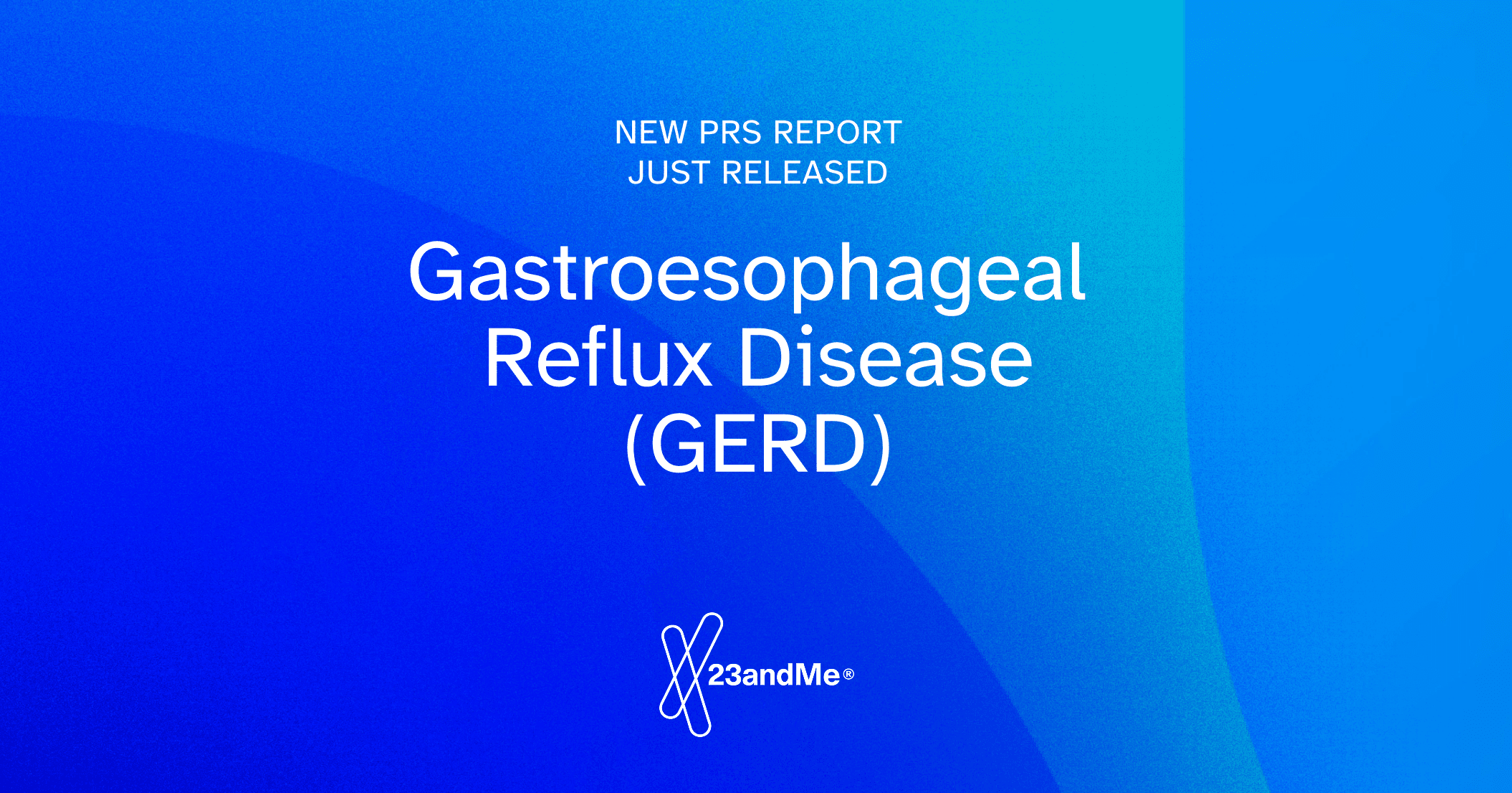By Mikala Evans, MPH
As many as 40 percent of adults in the United States, or approximately 103.3 million people, may not know they are currently living with high cholesterol.[1]
High cholesterol is one of the major risk factors for heart disease/cardiovascular disease – the #1 killer of men and women in the United States.[2]
Learning about cholesterol, including how to test for and improve specific numbers, is the first step in reducing the risk of this disease. While this has historically looked like diet and exercise, genetics is starting to play a more significant role in our understanding of individual and familial risk. Before we begin to unpack lifestyle and genetics regarding heart health, let’s start with a basic cholesterol panel.
Key Terms
Cholesterol is a critical substance required by the cells in our body to make many things, including cell membranes, hormones, and vitamin D. Our bodies use our blood to get cholesterol to our cells, where it can be utilized. However, cholesterol and other fats essential for our cells (notably triglycerides) do not travel well in blood. Our body solves this problem by using lipoproteins. Key Terms
Lipoprotein is a fancy word for a transport system that surrounds triglycerides (fats) and most cholesterol so they can travel through blood. The amount of cholesterol within a lipoprotein can vary. The two most common lipoproteins are HDL (“good”) and LDL (“bad”). A major difference between these two, and a large part of what makes them good or bad, is the apolipoprotein that is included in their transport system.
Apolipoproteins act as keys that allow HDL or LDL to be brought inside a cell. Once inside, the fat and cholesterol are released and utilized. LDLs contain apolipoprotein B or Apo B, while HDLs contain apolipoprotein A or Apo A. For heart health, apolipoprotein B is often focused on as it is what makes LDL “bad.” Apolipoprotein B is associated with the entrapment of these lipoproteins in arterial walls, which can lead blocked arteries over time.
Cholesterol panels are a great way to get a current snapshot of your heart health and will often include the key terms mentioned in the sidebar. ApoB measures how many LDL particles are in the blood. In contrast, LDL-C measures the amount of cholesterol these LDL particles carry (remember: the amount of cholesterol can vary per particle). Total cholesterol measures your blood’s total amount of cholesterol, including LDL and HDL. Per the American Heart Association (AHA), the optimal total cholesterol level is about 150 mg/dL, with LDL-C at or below 100 mg/dL.
These values are critical for heart health and can be further understood through their relationship with lifestyle and genetics. Lifestyle changes are beneficial for most people and are a great place to start when trying to improve cholesterol, ApoB, and LDL levels.
Lifestyle
When discussing lifestyle habits, much of the advice is common knowledge today: maintain a healthy weight, stay physically active, and make heart-healthy food choices. While healthy weight varies per individual, certain foods are better to limit. Reducing the amount of saturated fat and avoiding trans fat can help improve cholesterol and ApoB levels.
Foods with saturated fats include red meat, whole milk, dairy products, coconut oil, and palm oil. Limiting trans fat consumption is best, but it might also be hidden as its alternative name, partially hydrogenated oils. It’s important to note that the focus here is on eating less saturated and trans fat and not eating less cholesterol. That’s because most cholesterol in our circulation is made by our cells and not consumed. The human body makes all the cholesterol it needs.[3]
It was once believed that eating eggs, which are high in cholesterol, would increase cholesterol levels. This has recently been shown to not be true as humans excrete most of the cholesterol they consume. It’s the consumption of saturated fats and trans fats that are actually raising cholesterol levels. These foods can be replaced with unsaturated fats in salmon, avocados, nuts, olive oil, and canola oil.
The other piece of the heart health puzzle is genetics. Two specific genetic conditions have a huge impact on heart health and have seen recent scientific breakthroughs: Familial Hypercholesterolemia and Lp(a).
Lp(a)
Lipoprotein (a), or Lp(a) (pronounced L-P-little a), is a type of low-density lipoprotein (LDL) and therefore contains ApoB. About 1 in 5 people worldwide have high lipoprotein(a) levels[4].
Although all types of LDL can contribute to fatty buildups in arteries, Lp(a) particles are considered the most “sticky.” This means high levels of Lp(a) increase a person’s chances of these fatty buildups in and on arterial walls. Lp(a) levels are relatively stable over a person’s lifetime because genes control how much Lp(a) a person’s body makes.
By age 5, people usually have their “adult level” of Lp(a), which tends to remain at that level regardless of diet and exercise.[5] Lp(a) levels can also vary with ethnicity. For example, people of African, African American, or South Asian descent have higher Lp(a) levels on average compared to people of East Asian, European, or Hispanic descent[6].
If you are wondering about your Lp(a) levels, these can be determined via a serum blood test. This blood test is different from a cholesterol panel. A routine cholesterol test may show that your LDL cholesterol level is “healthy,” but if a large percentage of the LDL cholesterol is carried by Lp(a) particles, the risk for heart disease and stroke could still be high.[7] As this is not a routine blood test, you may need to specifically request it from your healthcare provider.
Historically, there were few, if any, treatments for increased Lp(a). Lp(a) was not frequently measured due to these limited treatment options and the minimal impact of lifestyle changes. Thankfully, recent scientific breakthroughs have seen progress in the ability to treat Lp(a), and people who are diagnosed now have options to get their numbers back under control.
Familial Hypercholesterolemia
23andMe’s FH Report
Familial Hypercholesterolemia (FH), is one of the most common genetic conditions. It’s linked to variants in multiple genes. Two of these genes are called APOB and LDLR. There are over 1,000 genetic variants known to be associated with FH.
People with genetic variants causing FH are likely to have elevated LDL cholesterol levels, which is associated with an increased risk for heart disease.
The 23andMe’s Familial Hypercholesterolemia Genetic Health Risk report** is part of our 23andMe+ Premium™ and it looks for 24 specific variants linked to two of these genes, APOB and LDLR.
You can learn more about all that 23andMe+ Premium offers including our FH report here.
Another common genetic condition that impacts heart disease is familial hypercholesterolemia (FH). An individual with FH cannot properly recycle LDL. These individuals are, therefore, born with high LDL cholesterol levels that only get higher over their lifetime. As mentioned above, since high LDL levels increase the risk of coronary heart disease, people with FH have 20 times the risk of developing heart disease.[8]
FH is critical to discuss when mentioning heart health because FH affects about 1.3 million people (adults and children) in the U.S., but only about 30% of people are aware they have it.[9] There are two main types of FH: Heterozygous FH (HeFH) and Homozygous FH (HoFH). HeFH is only inherited from one parent, and if left untreated, people with HeFH may develop heart disease as early as 30 years old. HoFH is inherited from both parents and is rarer and much more severe. With HoFH, LDL cholesterol levels can reach above 400 mg/dL of blood, and people with HoFH may develop heart disease in the first 10 years of life, sometimes as soon as 2 or 3 years old, if not treated early.[10]
As one in every 200 Americans may be impacted by FH, raising awareness about how to diagnose and treat it is critical. FH can be diagnosed through a physical exam, lab results, personal and family history, and genetic testing. Unlike Lp(a), lifestyle changes can help, but it cannot be treated by diet and exercise alone. Individuals with FH should speak with their healthcare provider about statins and other cholesterol-lowering medication options.
While everyone has different cholesterol levels and risks, understanding the basic concepts and how to assess personal risk is critical for people to better understand their health and start taking action toward a healthier future.
Fun Fact – Heart Health Addition
How many times does your heart beat a day on average?*
Mikala Evans’ time with 23andMe goes back to 2015 when she worked with our Customer Care team. She returned to the company after receiving her master’s in public health from UCLA, where she trained in epidemiology and focused her studies on asthma within a community in Los Angeles exposed to natural gas pollution. After returning to 23andMe, Mikala has worked as a quality engineer focused on compliance. She has a bachelor of science in biochemistry and a minor in religious studies from Washington University in St. Louis. She loves her two nieces and exploring all the natural beauty in Northern California.
*Answer: 100,000 times!
**23andMe health predisposition reports include both reports that meet FDA requirements for genetic health risks and reports which are based on 23andMe research and have not been reviewed by the FDA. The test uses qualitative genotyping to detect select clinically relevant variants in the genomic DNA of adults from saliva for the purpose of reporting and interpreting genetic health risks. It is not intended to diagnose any disease. Your ethnicity may affect the relevance of each report and how your genetic health risk results are interpreted. Each genetic health risk report describes if a person has variants associated with a higher risk of developing a disease, but does not describe a person’s overall risk of developing the disease. The test is not intended to tell you anything about your current state of health, or to be used to make medical decisions, including whether or not you should take a medication, how much of a medication you should take, or determine any treatment. The Familial Hypercholesterolemia genetic health risk report is indicated for reporting of one variant in the APOB gene and 23 variants in the LDLR gene and describes if a person has variants associated with an increased risk of developing very high LDL cholesterol, which can lead to heart disease. The majority of the variants included in this report have been most studied in people of European and Lebanese descent, as well as in the Old Order Amish. For important information and limitations regarding each genetic health risk report, visit 23andme.com/test-info/.
Footnotes:
[1]https://jamanetwork.com/journals/jamacardiology/article-abstract/2811350?guestAccessKey=cad4492b-7050-431d-9d2c-f55e0e971cc9&utm_source=For_The_Media&utm_medium=referral&utm_campaign=ftm_links&utm_content=tfl&utm_term=110123
[2]Cathy Lewis, “More than half of U.S. adults don’t know heart disease is leading cause of death, despite 100-year reign, AHA, published January 24, 2024, “https://newsroom.heart.org/news/more-than-half-of-u-s-adults-dont-know-heart-disease-is-leading-cause-of-death-despite-100-year-reign
[3] American Heart Association, “Watch Learn and Live – Cholesterol”, https://watchlearnlive.heart.org/index.php?moduleSelect=hdlldl
[4]Michael Precker, “Monitoring lesser-known numbers in a blood screening can help heart health”, American Heart Association News, AHA, published January 12, 2024, https://www.heart.org/en/news/2024/01/12/monitoring-lesser-known-numbers-in-a-blood-screening-can-help-heart-health
[5] “Lipoprotein (a) Blood Test”, MedlinePlus: National Library of Medicine (NIH); last revised August 3, 2022, https://medlineplus.gov/heartattack.htmlhttps://medlineplus.gov/lab-tests/lipoprotein-a-blood-test/
[6] Anurag Mehta, Vardhmaan Jain, Anum Saeed, Joseph J. Saseen, Martha Gulati, Christie M. Ballantyne, and Salim S. Virani, “Lipoprotein(a) and ethnicities”, Atherosclerosis, Volume 349, 2022, Pages 42-52, Accessed via https://doi.org/10.1016/j.atherosclerosis.2022.04.005
[7]“Lipoprotein (a) Blood Test”, MedlinePlus: National Library of Medicine (NIH); last revised August 3, 2022, https://medlineplus.gov/heartattack.htmlhttps://medlineplus.gov/lab-tests/lipoprotein-a-blood-test/
[8]American Heart Association, “Watch Learn and Live – Cholesterol”, https://watchlearnlive.heart.org/index.php?moduleSelect=hdlldl
[9] Family Heart Foundation, “Familial Hypercholesterolemia”, https://familyheart.org/familial-hypercholesterolemia#:~:text=FH%20is%20found%20in%201,know%20they%20have%20it%20today, accessed 17 June 2024.
[10]American Heart Association, “Watch Learn and Live – Cholesterol”, https://watchlearnlive.heart.org/index.php?moduleSelect=hdlldl




